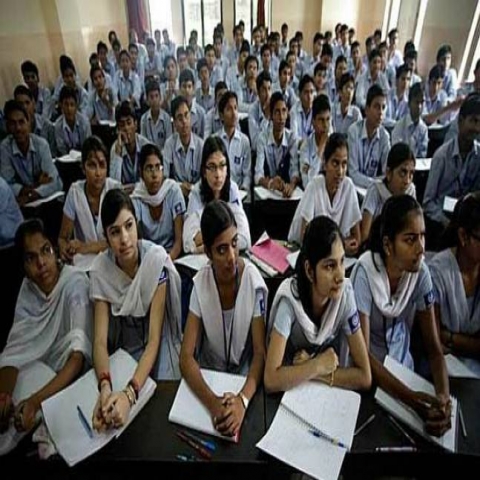
School – A Centre for Social Change and Service – D. Ramakrishna Rao
NEP-20 did come out with a concept that Schools are to be promoted as ‘Samajik Chetna Kendra’, which is an indication to enhance the social responsibilities of education institutions. Of course, we have been discussing that education by 2050 is to guide and focus more on life skills and social orientation. This is a step forward in this direction.
Not an Island:
A school is not simply a place where a student is shaped to be academically excellent with all-round development of personality by building value and spiritual base, but also be trained to become a creative, innovative., experimentative, and producer of knowledge. This is one aspect but another important one is that a school is not an ivory tower or island to work in isolation, but an agent of social change and transformation. We should not forget that an educational institution is also a part of the system to bring reforms in the socio-cultural-economic fabric of the village. While defining the goals of education a student is to be integrated into the society and nation at large, was mentioned repeatedly in all the educational policies right since1968.
Influencing mindset of the society:
Schools shall leave a positive influence on society by shaping the morals, mentalities, and culture of the society. It can lead the society in some areas by becoming the chief instrument in a scheme of changes in human life. Vocational or technical education helps is the process of industrialization. Education changes the outlook of the people on social issues and also sharpen the skills and knowledge of the people. Hence mindset of the society can be changed by the school.
Schools should reach out the society beyond the gates in the community and conduct a number of programs. Activities are to be designed to bring the society to the school for involvement, enrichment, and empowerment of the people.
Stakeholders with social responsibility:
Principal, teachers, management, alumni, parents, and students can all become agents of social change and service, with proper orientation. All these stakeholders have both individuals as well as an institutional social responsibility to serve and a role defined.
Some of the suggested activities and enterprises are given hereunder
1. Adopting a village or slum by the school:
At micro level a village in rural areas and slums or Seva Basthis in unban dwellings are to be adopted, for which we undertake a detailed socio-cultural-economic survey after which prioritizing the problems, challenges, and activities for transformation are chalked out by involving social, cultural, and economic leadership of the village as well. Then action plan follows.
2. Undertaking service schemes in surrounding villages/ basthis:
Students are not only techno-informative, modern, and highly knowledgeable but also have a value base. Hence service activities like balasamskar kendras, Vidyarthi vikasa kendras (tuition centers), matru mandalis, adult education centers, Vocational training/skills development centers, tasks of self-reliance are to be planned with the help of parents, staff, students, and Sajjan Shakthi of the society.
3. Participation in community and cultural festivals of the villages:
School should link itself to the society by participating in socio-cultural functions of the village. Our cultural, national, and social values can be transmitted through these programs.
4. Students exposing to the conditions of underprivileged sections, along with important service and rural development projects:
Students should be encouraged to visit the sensitive areas to observe the health, hygiene, living environment, and economic conditions to make a feel about their social responsibility. Important service, rural development, and transformation projects are to be visited to get a better understanding of the methods and process of service.
5. Adoption of surrounding schools for an educational change:
One or two schools may be adopted and benefits of school complex to enhance cooperation and sharing of resources for initiating a positive educational change in our area. Ways and means along with modus operandi can be thought as per the local needs and requirements. Especially in this technology-driven world innovative mechanisms, ICT and other training modules can better be shared.
6. Better utilization of school’s infrastructure:
School’s infrastructure may be better made available and utilized, by conducting summer camps, yoga training, social awakening activity, cultural exchange programs, and skill development activities, etc.
7. Planning pursuits for bringing society to school:
Involvement of society in different activities which are being held in the school may be an impetus and encourage enthusiastic proud participation to take a clue from time to time from other stakeholders of the school. E.g.: social and health awareness programs, Environment and water management training activity, etc.
8. Arranging Tasks for strengthening social harmony:
When these narrowminded caste approach is occupying the upper minds of the people, Places of worship and schools can be ideal institutions where people can be involved with broad-minded submission in all the endeavors. Social harmony (Samajik Samarasatha) in principle and practice at individual, families, institution, workplace and social life level is very much essential for unity and integrity of the nation. Education can be a catalyst for this type of change and can bring a big reform.
Focus on sensitive areas
In conclusion, we can declare that national goals can also be transmitted and achieved by educational institutions. No school should become a victim of the mad race of competition but by focusing on strategic, sensitive, border, and challenging problematic areas, the benefits can reach the unreached people and areas on which the progress of the nation depends.
Let us all work in the field of education for ultimate integration avoiding present differentiation and divisive trends. Ultimately my presentation is just an indication and direction but not all comprehensive. This is only to initiate and activate the thinking process.
(Author has Retired Principal and National President of Vidya Bharati)
